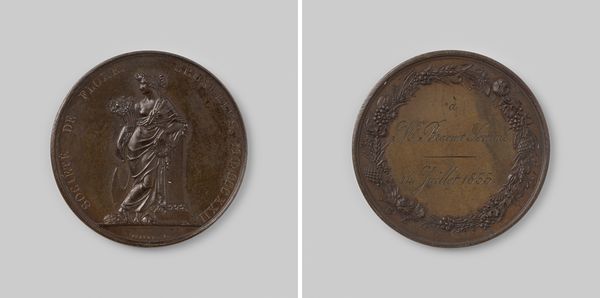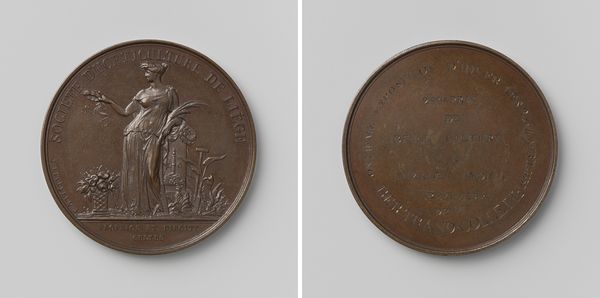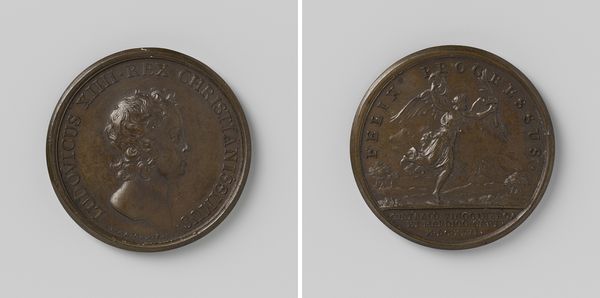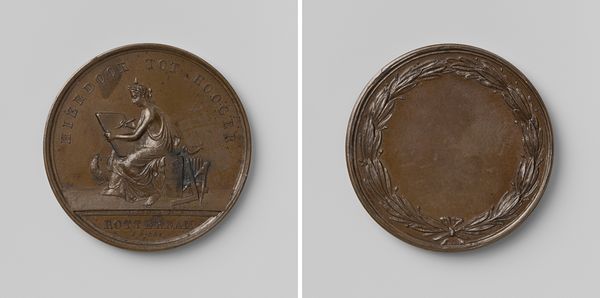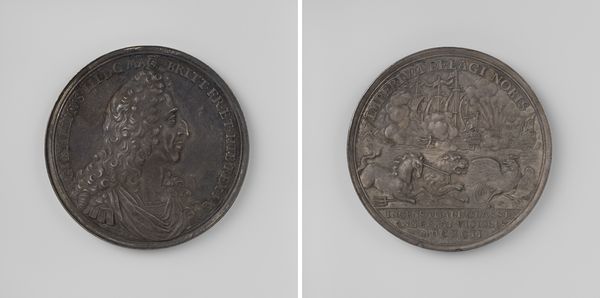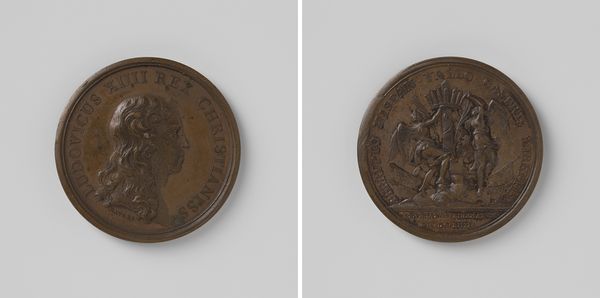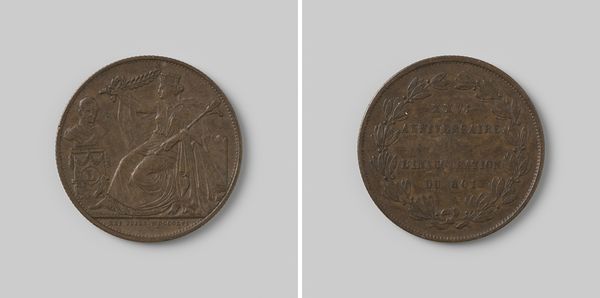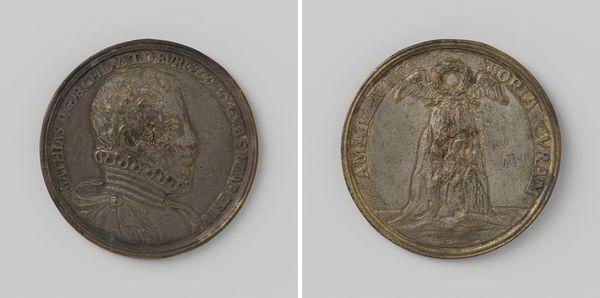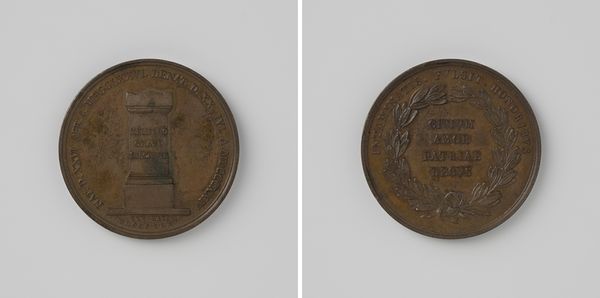
Zeeslag bij Kaap La Hogue, de Fransen verslagen door de vloot van Engeland en Holland 1692
0:00
0:00
#
natural stone pattern
#
3d sculpting
#
toned paper
#
3d printed part
#
detailed texture
#
sculptural image
#
unrealistic statue
#
3d shape
#
stoneware
#
ceramic
Dimensions: diameter 3.8 cm, weight 29.52 gr
Copyright: Rijks Museum: Open Domain
Curator: So, before us is a historical object: a stoneware medallion commemorating the naval battle of La Hogue in 1692, "Zeeslag bij Kaap La Hogue, de Fransen verslagen door de vloot van Engeland en Holland", by Jan (I) Smeltzing. What strikes you first about it? Editor: Oh, it has the strange effect of compressed violence, doesn't it? All that explosive naval conflict captured on a small, circular stage. Almost comical. Curator: Comical, perhaps because these medallions, like coins, were produced and distributed, turning warfare into a sort of propaganda… mass-produced glorification of maritime power. What do you make of the material itself? Editor: The ceramic texture and brown color lend it a weighty, almost somber feel. It feels strangely ancient despite its age. I can almost feel the craftsman pressing the clay, or whatever medium was used, into the mold. A direct connection to that moment, like capturing smoke. Curator: Exactly. The piece presents us with that tension. We are confronted with something both deeply artisanal and profoundly political—a material celebration of Anglo-Dutch sea power intended for distribution, for consumption. The artistic value sits squarely with production under political impetus, the socio-economic reality under the piece’s physical qualities. Editor: Hmm. What do you think the symbolism meant to the people of the time? Curator: Victory. Unquestionably, an attempt to instill pride and perhaps quell any unease about the costs of conflict. Note how, in compressing this historical moment, the medallion also distills a clear, unwavering message. Editor: A perfect little engine of power, indeed, from its material to its messaging. Even now, it retains this curious density. What a strangely fascinating object to meditate on the way the past is packaged. Curator: It certainly offers a compelling glimpse into the convergence of art, power, and manufacturing of the 17th century.
Comments
No comments
Be the first to comment and join the conversation on the ultimate creative platform.
